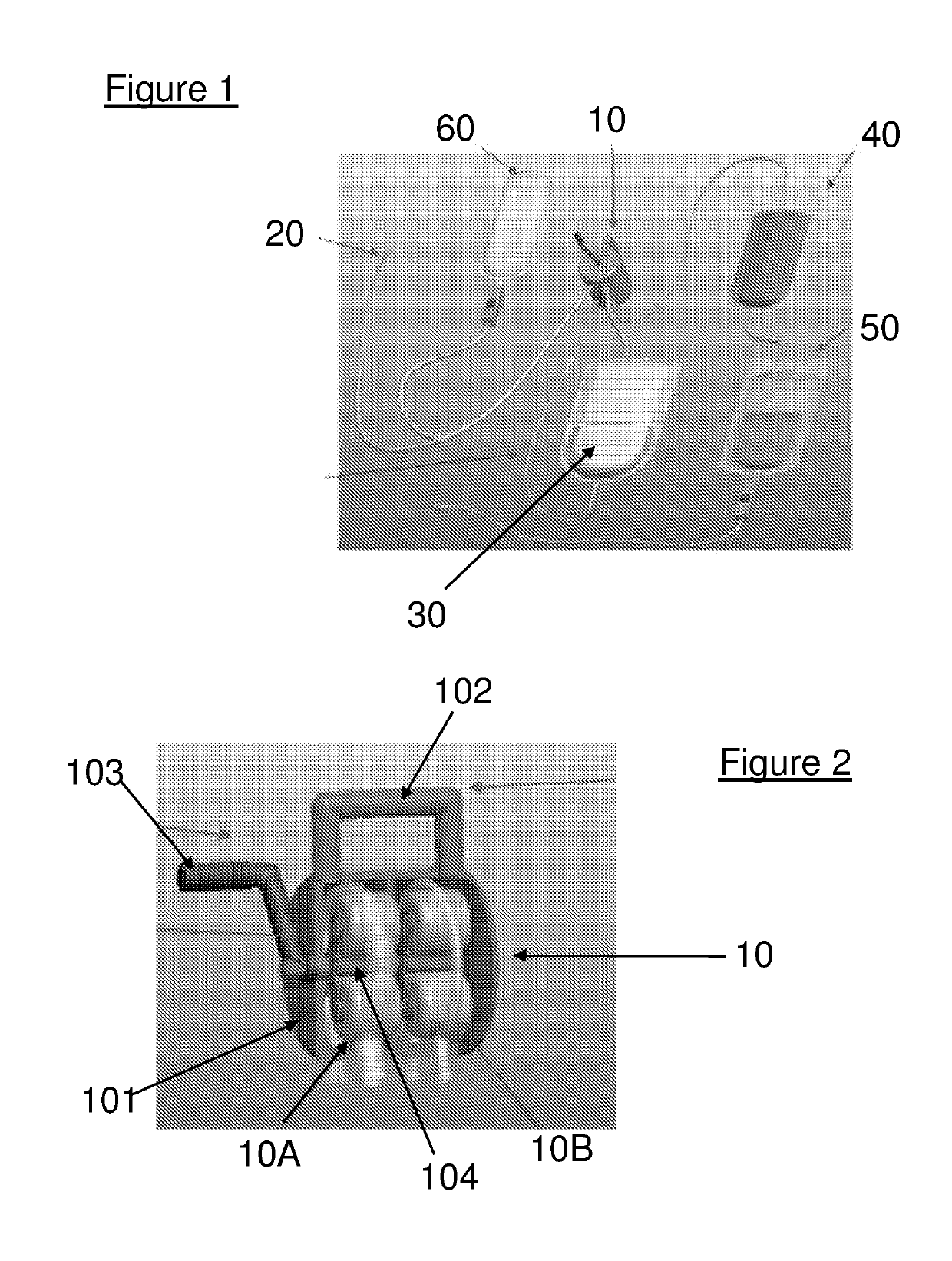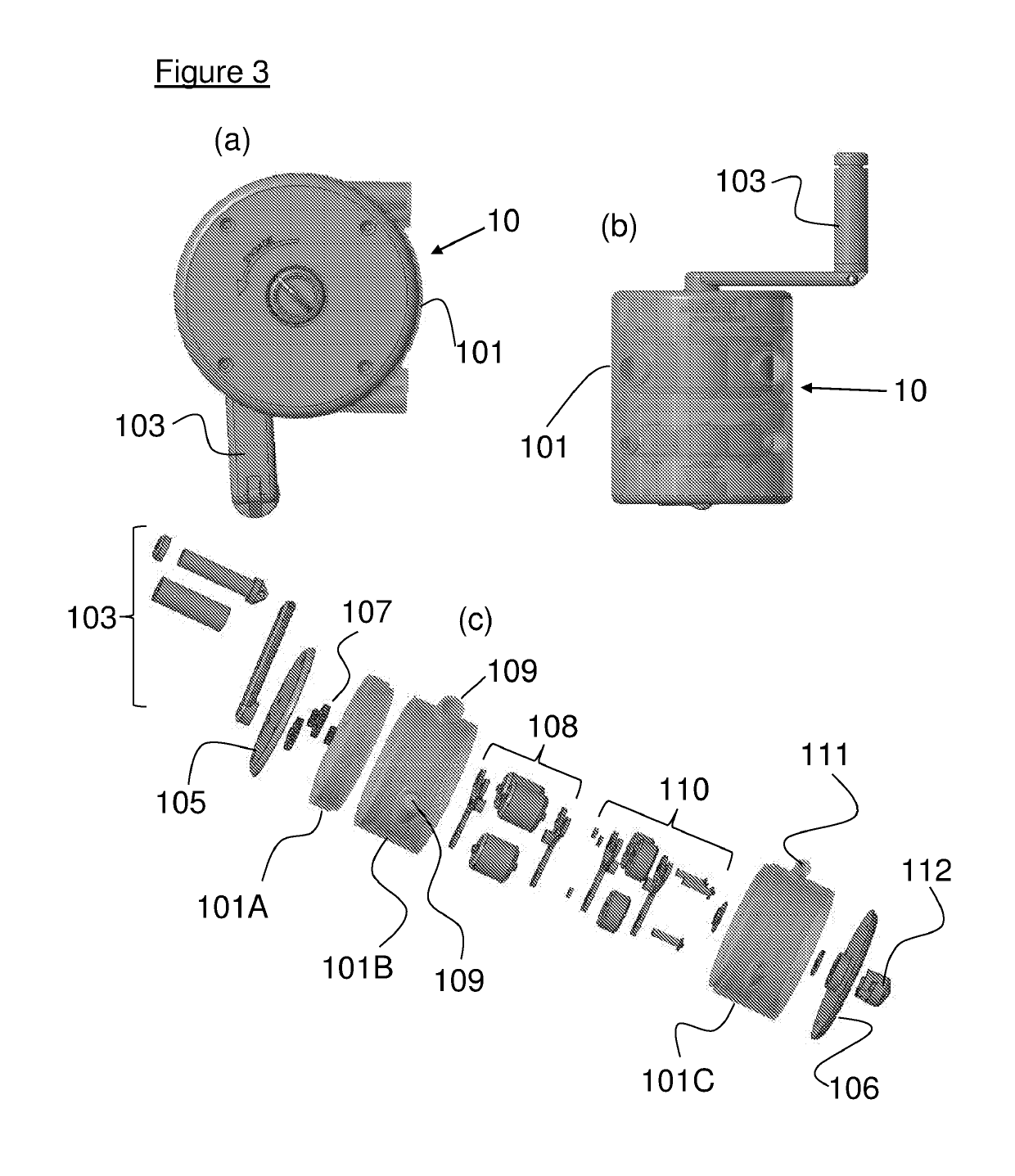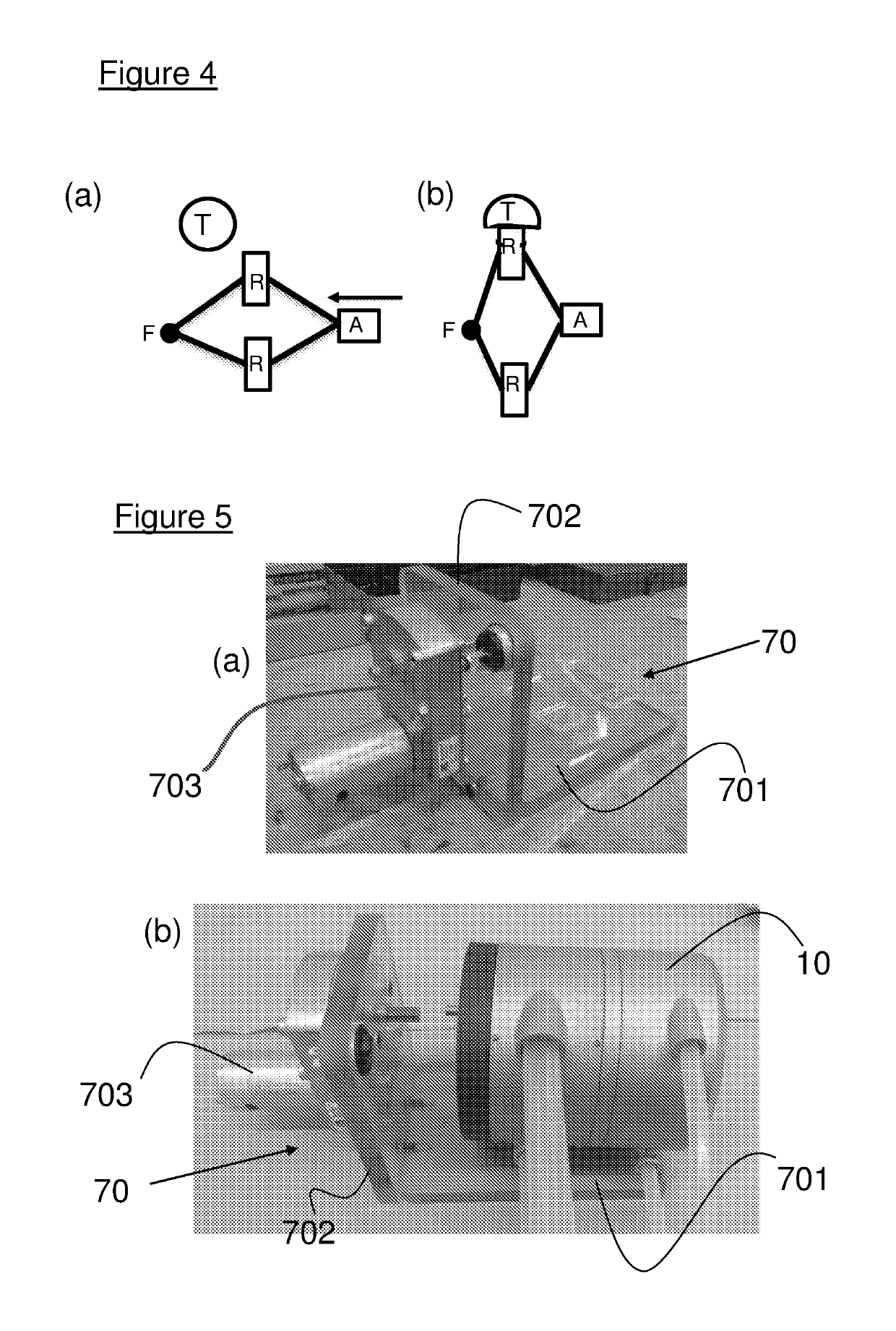Improvements in or relating to blood salvage and autotransfusion
- Summary
- Abstract
- Description
- Claims
- Application Information
AI Technical Summary
Benefits of technology
Problems solved by technology
Method used
Image
Examples
Embodiment Construction
[0065]Referring first to FIG. 1, a blood salvage and autotransfusion system according to the invention comprises the following principal components:[0066]manually operable peristaltic pump unit 10[0067]suction wand 20[0068]blood collection bag 30[0069]blood processing bag 40[0070]blood transfusion bag 50[0071]anti-coagulant reservoir 60
[0072]The above components are connected by suitable conduits that are of generally conventional form and construction, typically being flexible tubes of plastics material fitted with suitable connectors for connection to the respective components.
[0073]In use, the tip of suction wand 20 is inserted into blood at a wound site. As described in greater detail below, operation of the peristaltic pump unit 10 draws blood from the wound site to the blood collection bag 30. The fluid drawn from the wound site is a turbulent blood / air mixture. All air and major contaminants (eg clots, bone fragments etc) must be removed before the blood can be retransfused t...
PUM
 Login to View More
Login to View More Abstract
Description
Claims
Application Information
 Login to View More
Login to View More - R&D
- Intellectual Property
- Life Sciences
- Materials
- Tech Scout
- Unparalleled Data Quality
- Higher Quality Content
- 60% Fewer Hallucinations
Browse by: Latest US Patents, China's latest patents, Technical Efficacy Thesaurus, Application Domain, Technology Topic, Popular Technical Reports.
© 2025 PatSnap. All rights reserved.Legal|Privacy policy|Modern Slavery Act Transparency Statement|Sitemap|About US| Contact US: help@patsnap.com



